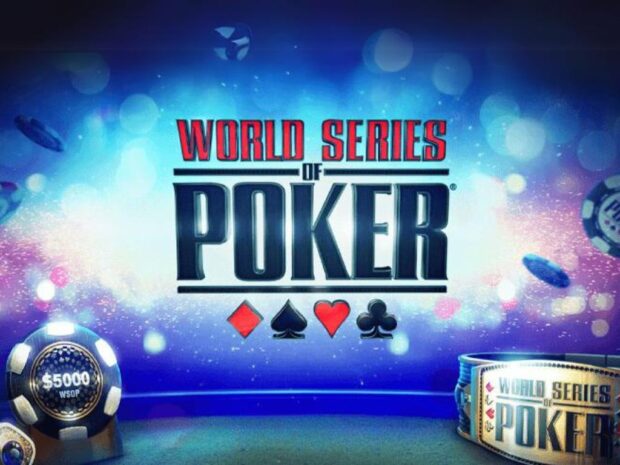The World Series Of Poker is a relatively young tournament, but the evolution of poker spans many centuries. Many people report that poker originated in the 1800s, but in truth, this popular game has roots in games played in different cultures across various continents and eras. Some consider Mahjong to be poker’s oldest ancestor, a game played by the Chinese emperor in the 10th century. Skip to 16th-century Persia, where the game of As Nas seems a likely predecessor of poker.
Although historians differ on the origins of poker, most agree that Primero, a game played in 16th-century Spain, was the catalyst for poker as it is today. Primero also influenced the development of the French and German games, poque and pochen, respectively, which also played a role in the origins of modern poker.
The prevailing nature of poker is a testament to the competitive human spirit and the desire for that one big win. The World Series of Poker (WSOP) is one of the most prestigious tournaments, which has evolved from a casual gathering of players in 1970 to a global spectacle that captivates millions today. Join us as we recount this tournament’s rich and colorful history.
The Origins of The World Series of Poker

WSOP is an annual series of poker competitions culminating in the crowning of the world poker champion. It’s the largest live poker festival in the world, drawing thousands of players hoping to take the multi-million dollar prize money. The Rio Las Vegas in Nevada hosts the annual event. Today, the WSOP comprises 101 events featuring most poker variants, with winners of each event receiving an engraved bracelet. But where did WSOP begin?
The seeds of WSOP were sown in 1949 in a competition between Johnny Moss, a top-notch poker player on the Texas circuit, and Nick Dandalos (also known as “the Greek”), a well-known card player. But it wasn’t until 1970 that WSOP became an official tournament.
In the early days of the WSOP, Benny Binion, owner of the Horseshoe Casino in Las Vegas, took the bold step of inviting seven renowned poker players to participate in a Texas Hold ’em tournament. Players entered the single-tournament championship with a $5,000 buy-in. The inaugural event in 1970, won by Johnny Moss, was a modest affair but set the stage for what would become a poker revolution.
The first tournament and many subsequent ones took place at Benny Binion’s Horseshoe Casino in Las Vegas. Moss took the first two championships and another in 1974, with only one other player, Stu Ungar, ever winning three titles. The first WSOP included a range of cash games, including Texas Hold ’em, razz, deuce to seven low-ball draw, five-card stud, and seven-card stud.
In 1971, the Main Event’s format changed to a freeze-out Texas Hold ’em. Since 1972, the buy-in increased to $10, 000 and play would continue until all competitors had gone “all in” and a single player was left at the table.
Binion’s Horseshoe Casino remained the epicenter of the WSOP until 2005 when the event outgrew its original venue. The move to the Rio Hotel and Casino represented not just a logistical shift but a symbolic expansion, signifying the tournament’s rise from a local gathering to a global phenomenon.
Expansion and Globalization
By 1979, the tournament boasted 12 bracelet events, and the event’s attendance grew steadily during the 80s and 90s. By 1991, the prize for the Main Event reached $1 million. The 2003 Main Event took the competition to new heights as ESPN used a new hole card camera to allow the viewers to see each player’s hand.
The same year, Chris Moneymaker won the tournament after pushing through the biggest Main Event field in the WSOP’s history, taking home $2.5 million in an incredible tournament run. This blew the lid off the competition’s popularity.
After Harrah’s acquired the Horseshoe Casino in 2004, the WSOP grew exponentially. It developed new circuits inside and outside of the United States:
In 2005, the WSOP established the World Series of Poker Circuit, featuring satellite series hosted at Harrah’s-owned properties across the country.
2007 saw the expansion of the WSOP into Europe as the tournament held three events in London, with the Main Event won by the youngest player ever, Annette Obrestad, who was 18 at the time.
In 2010, the WSOP expanded into Africa, this time in Gauteng, South Africa. Although winners didn’t earn a gold ring for the circuit, in 2012, this change was made.
In 2013, the Crown Melbourne Casino and the WSOP created the WSOP Asia-Pacific. The first Melbourne series boasted five bracelet events.
The launch of the WSOP International Circuit happened in 2015, with rounds running in Canada, Europe, Asia-Pacific, Africa, and Latin America. Each tournament’s winners go on to compete in the WSOP Global Casino Championship.
The 2020 pandemic restrictions led to the first online event, taking the lead from casinos like Big Dollar who offer safe and fair gaming on desktop and mobile. It took this form again in 2021 as the pandemic was still in force.
2024 saw the inclusion of the Bahamas into the circuit.
Memorable Moments and Champions

The annals of WSOP history are adorned with unforgettable moments and legendary champions. Stu Ungar’s back-to-back triumphs in 1980 and 1981, Phil Hellmuth’s record-setting 15 bracelets, and Chris Moneymaker’s fairy-tale victory in 2003 are just a few of the stories that have etched themselves into the fabric of poker lore.
With its multi-million dollar prize pool, the Main Event consistently attracts the crème de la crème of poker talent. Daniel Weinman won a record-breaking prize of $12.1 million in the 2024 WSOP. In addition, he also received a massive bracelet consisting of about 1 lb of 10-karat yellow gold and 2352 precious gemstones.
Beyond the poker tables, the WSOP has seeped into the mainstream world through televised broadcasts and media coverage. ESPN’s portrayal of the Main Event transformed poker into a televised spectacle. Players such as Daniel Negreanu and Antonio Esfandiari transcended the poker world, becoming well-known figures in popular culture.
A Poker Legend
From its humble beginnings with seven players in Binion’s Horseshoe Casino, the WSOP has exploded into a world-class phenomenon. Its rich history, marked by the rise of poker legends and its availability to players everywhere, reflects the broader growth of poker as a sport. As it continues to shape the landscape of competitive poker, we can only anticipate the exciting chapters yet to be written in its storied evolution.
 Poker Players Alliance Casino & Gambling Articles 2024
Poker Players Alliance Casino & Gambling Articles 2024






